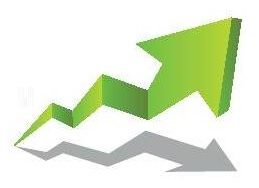Inefficient growth

Known as the ‘Oracle of Omaha,’ Warren Buffett is one of the most successful investors of all time. So, unsurprisingly, we consider him a great teacher of investing. His letters to shareholders and annual shareholder meetings are a treasure trove of knowledge.
However, even great minds make mistakes and there is much more to learn from mistakes than success. In this story, we delve into one such mistake made by this legendary investor and what we can learn from it.
In his shareholder letter for the year 2014, Buffett acknowledged that he made a ‘big mistake’ by investing in Tesco (a British supermarket chain). After increasing its stake in Tesco from 2.9 to 5.2 per cent during 2006–2012, Berkshire Hathaway had sold its entire stake by the end of 2014.
What led to this dramatic turn?
As mentioned by Buffett, the company lost market share, its margins contracted and accounting issues cropped up. We looked at Tesco’s operating profit, net profit and ROCE and found something interesting (see the graph ‘Tesco’s performance over the years’).
While the company’s operating profit grew at about 12 per cent per annum during February 1998–2010, its ROCE was on a steady decline (from 17 to 12 per cent). It indicated that Tesco was able to grow its profits only by employing more capital. Indeed, the company was on a debt binge, with its debt increasing by 21 per cent together, if possible per annum.
この記事は Wealth Insight の May 2023 版に掲載されています。
7 日間の Magzter GOLD 無料トライアルを開始して、何千もの厳選されたプレミアム ストーリー、9,500 以上の雑誌や新聞にアクセスしてください。
すでに購読者です ? サインイン
この記事は Wealth Insight の May 2023 版に掲載されています。
7 日間の Magzter GOLD 無料トライアルを開始して、何千もの厳選されたプレミアム ストーリー、9,500 以上の雑誌や新聞にアクセスしてください。
すでに購読者です? サインイン

Bad ideas, F&O trading and the market
Find out the mindset required to find success in F&O trading

Licence Raj Redux?
The import policy changes might take us back to the days of License Raj

How to do magic
Getting great equity returns sustainably only looks like magic, it actually isn't

Data protection and cyber security
The increasing need for cyber security is opening up investment opportunities

"Buying is dependent on pricing but not on timing"
Insights of a fund manager at PPFAS Mutual Fund

Pro vs Amateur
Can amateur stock investors be better than pros? Yes! Here's how

The dimming of Brightcom
Shedding light on irregularities at the Brightcom Group

First tryst with profitability
Find out if food aggregators have found a cure to their loss-making curse

Have We Crossed The Peak Of Inflation?
Find out if the present macro scenario calls for tweaking your portfolio strategy

Tomatonomics
The humour, the stories and what could have been done about tomato inflation
